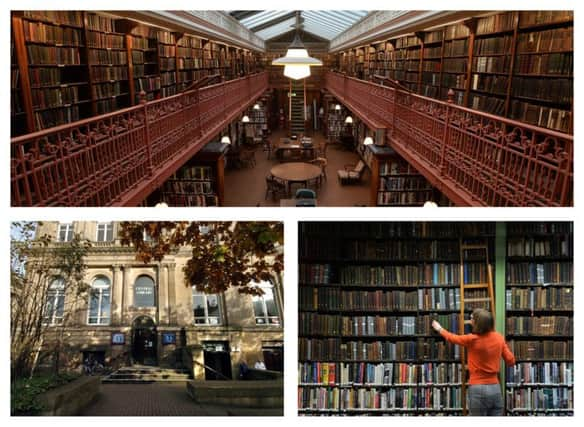Looking back on the 250-year history of The Leeds Library


But what do we know of it’s past?
The early days of The Leeds Library
Founded in 1768 after an advertisement was placed in the Leeds Intelligencer, which is now actually the Yorkshire Post, The Leeds Library is the oldest surviving subscription library of its type in the UK.
A subscription library, also known as a membership library, is a library that is financed by private funds either from membership fees or endowments. Access is often restricted to members, but access rights can also be given to non-members.
Advertisement
Hide AdAdvertisement
Hide AdThe first secretary of The Leeds Library was Joseph Priestley, an 18th-century theologian, philosopher, chemist, and innovative grammarian, who produced over 150 works and who has now been credited with the discovery of oxygen.
The library moved several time when it was first founded, before settling into the purpose built premises located on Commercial Street in Leeds, on 4 July 1808.
The building itself is a grade II listed Greek Revival building, designed by Thomas Johnson, a British architect who also built the Holy Trinity Church in Halifax. It is also rumoured that he helped with the redesign of the south-west section of Temple Newsam.
The library building then gained a major extension to its rear in 1880-81, by Leeds-local Architect Thomas Ambler, who also worked on St Paul’s House in Park Square, Leeds, St James’s Hall in New York Street, and the Grade II listed building of Alf Cooke printworks in Hunslet Road, which is now part of the Printworks Campus of Leeds City College.
Why was this library built?
Advertisement
Hide AdAdvertisement
Hide AdThe Leeds Library and became a feature of many towns during the late 18th century and the beginning of the 19th century, including places such as Belfast, Manchester, Penzance and Plymouth.
These libraries began to appear alongside other privately funded schemes such as cloth halls, assembly rooms and canal companies.
These libraries were integral to providing information, education and entertainment to the public.
Books began to be published in larger and larger numbers during the 18th century and their target audience of middle class readers had more free time to read books.
Advertisement
Hide AdAdvertisement
Hide AdHowever, books were expensive during this period of time and there were no free public libraries, so The Leeds Library, alongside other subscription libraries aimed to acquire new books that their members would want to read and to continue to collect them, so that eventually their collections would increase in both size and value.
The vast majority of the books that The Leeds library acquired were available on loan and were placed on open shelves, where members could freely select them. Catalogues were also printed and distributed regularly in order to help customer with book selection.
Why are subscription libraries now so rare and how has The Leeds Library continued to thrive?
Other rival subscription libraries, including those of the philosophical and literary societies offered other features alongside books, such as museums, scientific investigation and public lectures, which then became competition against normal subscription libraries.
Advertisement
Hide AdAdvertisement
Hide AdAnother reason substriction libraries began to close was due to the opening of public libraries in the middle of the 19th century.
However, The Leeds Library continues to survive to this very day, one of the main reasons for this being the premises of the library building.
The shops which were under the first-floor library provided an income alongside the books subscriptions and the street the library is located on, Commercial Street, was the most fashionable street in Leeds for a long time, which ensured high rents from the library shops.
During the second half of the 19th century, it was also fashionable to be a member of The Leeds Library, but during the 20th century a combination of reduced income and popularity put the Library into financial difficulty for quite a few years, resulting in important books having to be sold in order to keep the library open.
Advertisement
Hide AdAdvertisement
Hide AdHowever, from the early 1980s onwards, finances became more stable stability and a renewed interest in the library has resulted in a period of growth in both stock and members, and sizeable improvements in staffing, building and conservation programmes.
The present day
The Leeds Library is now a vibrant mixture of old and new, located in the heart of the city.
The collections held there are rich in travel, biography, history and literature which includes novels and children’s literature.
Around 1,500 new books and audio/visual items are added every year and on July 1 2008 the library became a charity.
Advertisement
Hide AdAdvertisement
Hide AdThe Leeds Library has a had a long and rich history with many up and downs, which the library’s year-long events and exhibitions will both celebrate and reflect on. This library is a staple part of Leeds and continues to thrive today, intending to carry on doing so for many years to come.